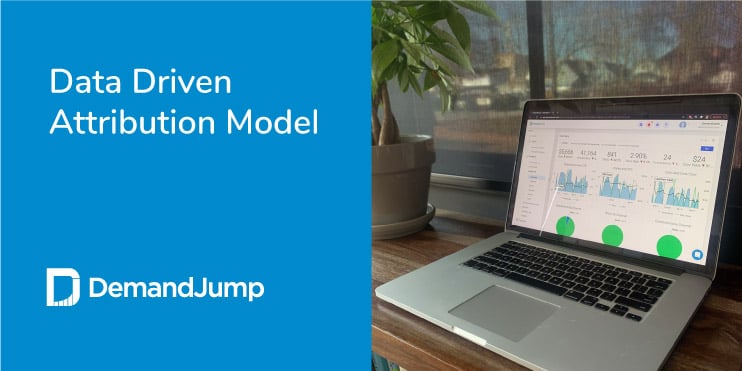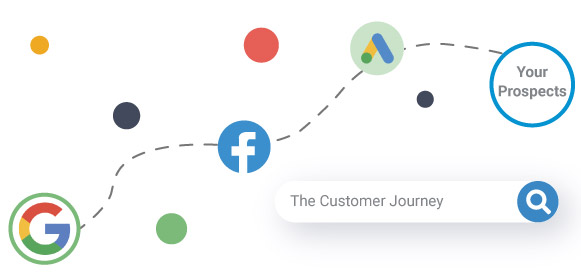Data-Driven Attribution Models: How and When To Use Them
January 3, 2022 •DJ Team

So, why are marketing attribution models important? Let’s discuss. Attribution models help marketers measure and track consumers’ responses to touchpoints across their marketing strategy.
It helps them qualify the effectiveness of their customer interactions, including the full sales cycle: from the first time a consumer engages a brand to when they act and make a purchase.
Single-touch and multi-touch marketing attribution platforms track simple and complex sales funnels.
For example, a single touch would include the last-click attribution model, which gives credit to the last interaction a customer had with your brand before making a purchase. Multi-touch attribution models measure more complex sales cycles, and they are designed to weigh effectiveness across multiple customer interactions over time.
The data-driven attribution model is a multi-touch attribution model that uses machine learning to track large amounts of consumer data. This model helps marketers see how effectively their strategy leads to conversion through ads, keywords, campaigns, and content.
What is Data-Driven Attribution?
The data-driven attribution model maps engagement across multiple touchpoints, giving value to each interaction based on historical and real-time evidence on a widespread scale.
Also known as the algorithmic model, this model assigns value to these touchpoints by analyzing a high volume of very different interactions, from single touch impulse purchases to multi-channel sales cycles.
The hard part about attribution is assigning value to multiple touchpoints. Consumers will often click on several ads multiple times—or delete several newsletters before reading one—before making a purchase. So which ad or newsletter should receive credit?
The data-driven attribution model shows that all ads or newsletters should likely receive some fractional credit. And it uses the data from hundreds of consumers and thousands of interactions to gauge the value of individual pieces of a greater campaign.
Data-Driven Attribution vs Linear Attribution
How does data drive attribution differ from other attribution models? It comes down to complexity and finding patterns in high volumes of consumer behavior data.
When comparing, linear attribution distributes value evenly across all interactions from the beginning of the cycle to the end. Or, as in time-decay models, to put more emphasis based on more recent interactions.

The data-driven model, on the contrary, aims to map the value of an interaction based on how much it weighs on the final decision to purchase—which is a far more difficult process.
Should I Use Data-Driven Attribution?
The data-driven attribution model requires consumer information from lots of previous interactions. There has to be a historical pool to pull from and compare against. When you look at data-driven attribution vs last-click models, they can assign 100% credit to an interaction without any additional, historical information. Simply, the last click is responsible for the sale.
To know if you should use data-driven attribution, take stock of the amount and the diversity of your customer interactions. How much, and what type?
For example, if you only have a few hundred interactions each quarter, and they are generally simple, one-or-two click interactions before making a purchase, there’s not much historical information to inform your data-driven attribution model.
On the other hand, if you are overwhelmed by the number of interactions and the type of interactions you see, a data-driven attribution model might be perfect for your business. It’s designed to make sense of what seems to be chaos, to find patterns, assign value, and provide insight on how consumers uniquely come to a purchasing decision.
How Do I Turn on Data-Driven Attribution?
Data-driven attribution requirements include a platform that can measure interaction on a large scale, including touchpoints like social, ads, keyword strategy, and mobile. If a high volume of interactions are ideal for the data-driven attribution model, then a platform capable of tracking and processing that volume is the next requirement.
Google Ads offers data-driven attribution in their Conversions tool, and other platforms exist to measure attribution. But the key is to find a platform that can include all different types of customer interactions to input into the algorithm.
DemandJump’s data-driven attribution models provide unmatched brand information based on consumer interaction. With automated account-based attribution software, all your touchpoints and interactions are accounted for and used in a data-driven attribution model that can inform your marketing strategy moving forward. Learn how specific keywords drive sales and know-how pieces of content can contribute to a conversion.
Interested in learning more about how DemandJump’s marketing attribution platform works? See a demo today of how easy data-driven attribution can be.
Featured Articles
Categories
- Attribution Tracking (13)
- Channel Optimization (11)
- Consumer Insights (68)
- Content Marketing (251)
- Data Science (8)
- Digital Marketing (6)
- Digital Transformation (26)
- Enterprise (10)
- Lead Generation (14)
- Market Intelligence (8)
- Marketing Analytics (39)
- Marketing Attribution (57)
- Marketing Management (153)
- Marketing Operations (86)
- Organic Search (222)
- Paid Search (52)
- Pillar-Based Marketing (63)
- Programmatic Advertising (9)
- SaaS Content (14)
- SaaS Marketing (29)
- Search Marketing (111)
- SEO Keyword Research (28)
- SEO Pillar (18)
- SEO Strategy (46)
- SMB (5)
- Website Content (12)


